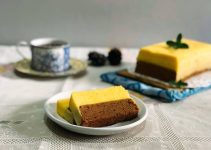Contents
Lobster bisque is a classic French soup known for its rich, creamy texture and deep flavors. Made from the essence of lobster shells, this bisque is a luxurious dish that transforms simple ingredients into a gourmet experience. Known for its velvety consistency and complex layering of flavors, lobster bisque is a favorite in fine dining establishments and among home cooks who love to impress. This article will guide you through the process of making an authentic lobster bisque, from selecting the best ingredients to perfecting the final presentation.
Selecting Ingredients For Lobster Bisque
:max_bytes(150000):strip_icc()/__opt__aboutcom__coeus__resources__content_migration__serious_eats__seriouseats.com__recipes__images__2017__04__20170407-lobster-bisque-vicky-wasik-32-899e4091f69b4f6e991ab364190857de.jpg)
The key to a flavorful lobster bisque lies in the quality of its ingredients:
- Lobster: Fresh, live lobsters are ideal for bisque as they offer the freshest taste and fullest flavor. The size of the lobster can vary, but typically, smaller lobsters are sweeter.
- Stock: Homemade lobster stock is preferable. It’s made by simmering lobster shells with aromatics, which infuses the base with intense flavor.
- Aromatics and Vegetables: Onions, carrots, celery, and garlic are essential for building the soup’s foundation. Fresh herbs like thyme and bay leaves add subtle depth.
- Cream and Sherry: Heavy cream adds richness, while sherry complements the lobster with its nutty sweetness.
Preparing the Lobster
- Cooking the Lobster: Begin by boiling the lobsters in salted water. This not only cooks the meat but also prepares the shells for making stock. Cook lobsters for about 8-10 minutes, depending on their size.
- Extracting the Meat: After cooking, remove the lobster meat from the shells. Set the meat aside for adding to the bisque later. Reserve the shells for the stock.
Making Lobster Stock
- Roasting the Shells: For added depth of flavor, roast the lobster shells in the oven until they are fragrant and slightly browned.
- Simmering: Combine the roasted shells with aromatics like chopped onions, carrots, celery, and fresh herbs. Cover with water, bring to a simmer, and let it cook for about 1-2 hours. Strain the stock to remove solids.
Crafting the Bisque
- Creating the Base: In a large pot, sauté additional onions, carrots, and celery until soft. Add tomato paste and a sprinkle of flour to form a roux, cooking until it develops a rich color.
- Infusing with Stock: Gradually add the prepared lobster stock to the roux while stirring to avoid lumps. This mixture should simmer for several minutes to thicken slightly.
- Blending for Smoothness: Once the base has simmered and the flavors have melded, blend the soup until smooth using an immersion blender or a regular blender. Strain through a fine mesh for an even silkier texture.
- Finishing Touches: Return the bisque to low heat, add heavy cream, and a generous splash of sherry. Adjust seasoning with salt and pepper. Gently fold in the reserved lobster meat, allowing it to warm through without overcooking.
Serving Suggestions
Lobster bisque is traditionally served hot with a garnish of fresh herbs, a dollop of crème fraîche, or a drizzle of truffle oil for an extra touch of luxury. Serve with crusty bread or a light salad for a complete meal.
Conclusion: A Testament to Flavor and Elegance
Mastering lobster bisque is a culinary dingdongtogel achievement that showcases your skills in creating a soup that is both rich in flavor and elegant in presentation. This dish not only satisfies the palate with its depth of flavor but also impresses guests with its sophisticated allure. Whether as a starter for a festive dinner or as a main course in a more intimate setting, lobster bisque remains a beloved classic that epitomizes the best of seafood cuisine.



